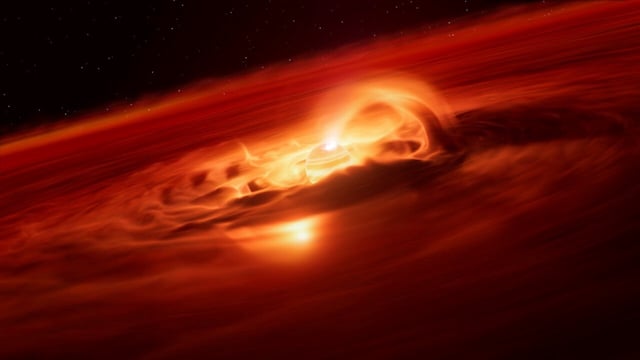Overview
- Cha 1107-7626, a free-floating object about 5–10 times Jupiter’s mass, lies roughly 620–630 light-years away in the Chamaeleon constellation and is about 1–2 million years old.
- In August 2025 its accretion peaked near six billion tonnes per second, about eight times the rate measured just months earlier.
- Spectroscopy indicates magnetically funneled inflow typical of young stars, with transient changes in the surrounding disc chemistry including water vapor during the burst.
- Researchers report the object is likely in the final stages of formation and not expected to gain much additional mass.
- The findings, published in Astrophysical Journal Letters, combine ESO’s Very Large Telescope time-series data with archival JWST, SINFONI, and other agency datasets.
